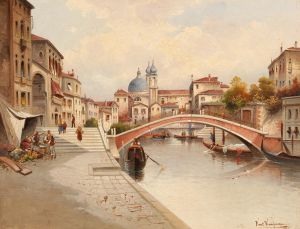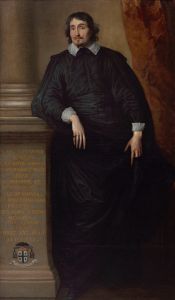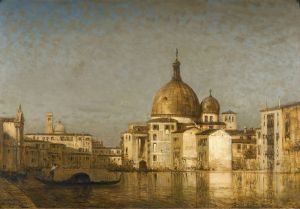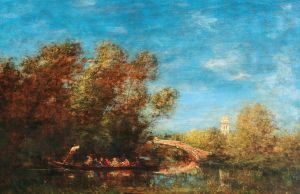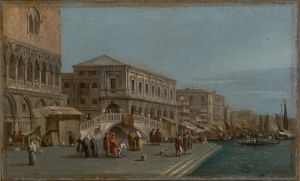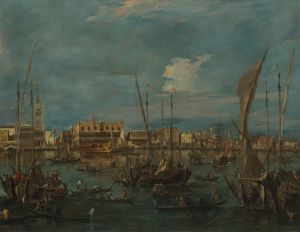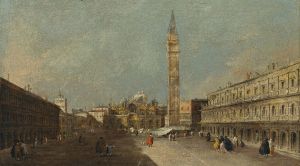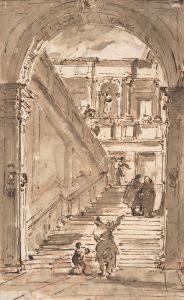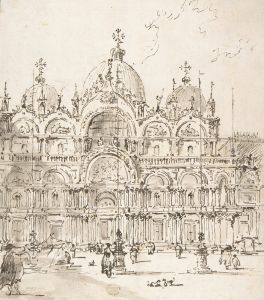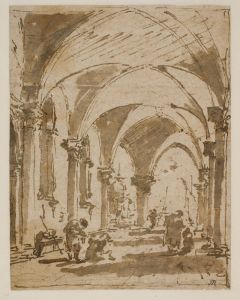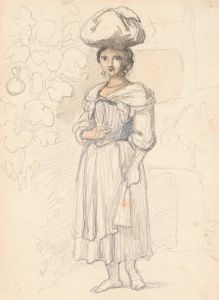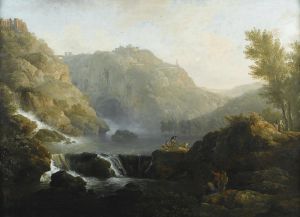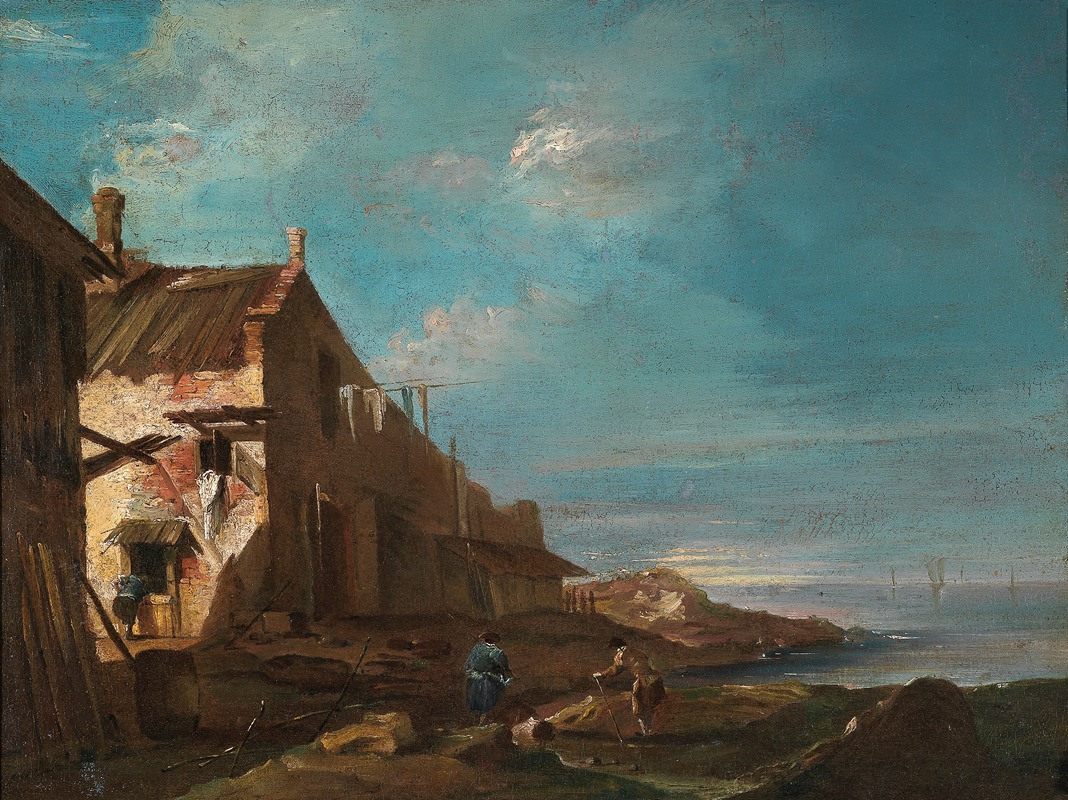
A Coastal Architectural Capriccio
A hand-painted replica of Francesco Guardi’s masterpiece A Coastal Architectural Capriccio, meticulously crafted by professional artists to capture the true essence of the original. Each piece is created with museum-quality canvas and rare mineral pigments, carefully painted by experienced artists with delicate brushstrokes and rich, layered colors to perfectly recreate the texture of the original artwork. Unlike machine-printed reproductions, this hand-painted version brings the painting to life, infused with the artist’s emotions and skill in every stroke. Whether for personal collection or home decoration, it instantly elevates the artistic atmosphere of any space.
"A Coastal Architectural Capriccio" is a painting by the Italian artist Francesco Guardi, who was a prominent painter of the Venetian school in the 18th century. Guardi is best known for his vedute, or detailed cityscapes, of Venice. He was born in Venice in 1712 and became one of the last practitioners of the classic Venetian school of painting.
This particular work, "A Coastal Architectural Capriccio," is an example of a capriccio, a genre of painting that combines real and imaginary architecture to create fantastical scenes. The term "capriccio" itself suggests a whimsical or imaginative composition, and this painting fits that description well. Guardi's capricci often featured a mix of recognizable Venetian landmarks and invented structures, set in dreamlike, often coastal, landscapes.
In "A Coastal Architectural Capriccio," Guardi employs his characteristic loose brushwork and luminous palette to create a scene that is both enchanting and slightly surreal. The painting depicts a coastal setting with a variety of architectural elements, including classical ruins, ornate buildings, and possibly a lighthouse or tower, all arranged in an imaginative manner. The sea and sky are rendered with a delicate touch, capturing the light and atmosphere of the coastal environment.
Guardi's technique in this painting is notable for its fluidity and the way he captures the play of light on water and stone. His use of color is also significant, with a harmonious blend of blues, greens, and earth tones that give the scene a cohesive and tranquil feel. The figures in the painting, though small in scale, add a sense of life and movement to the composition.
Francesco Guardi's work, including "A Coastal Architectural Capriccio," is often compared to that of his contemporary, Canaletto. While Canaletto's vedute are known for their precise and detailed representation of Venice, Guardi's works are more atmospheric and expressive. This difference in style reflects Guardi's interest in capturing the mood and essence of a scene rather than its exact topographical details.
"A Coastal Architectural Capriccio" is a testament to Guardi's skill as a painter and his ability to blend reality with imagination. The painting is part of the rich tradition of Venetian vedute and capricci, which were highly popular among collectors in the 18th century. These works were often sought after by Grand Tourists, who were wealthy Europeans traveling through Italy and other parts of Europe as part of their cultural education.
Today, Francesco Guardi's paintings, including "A Coastal Architectural Capriccio," are held in high regard and can be found in major art museums and collections around the world. They continue to be appreciated for their artistic merit and their ability to transport viewers to a fantastical version of Venice and its surroundings. Guardi's legacy as one of the last great Venetian vedutisti remains secure, and his works are celebrated for their unique blend of realism and imagination.





